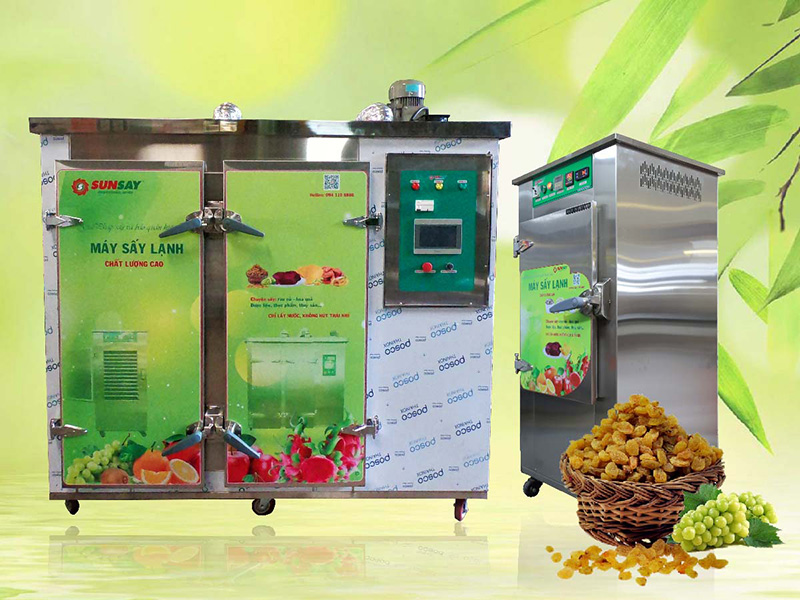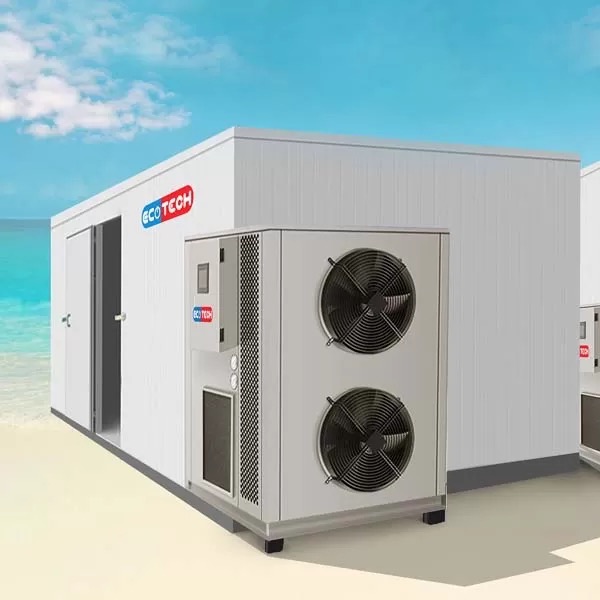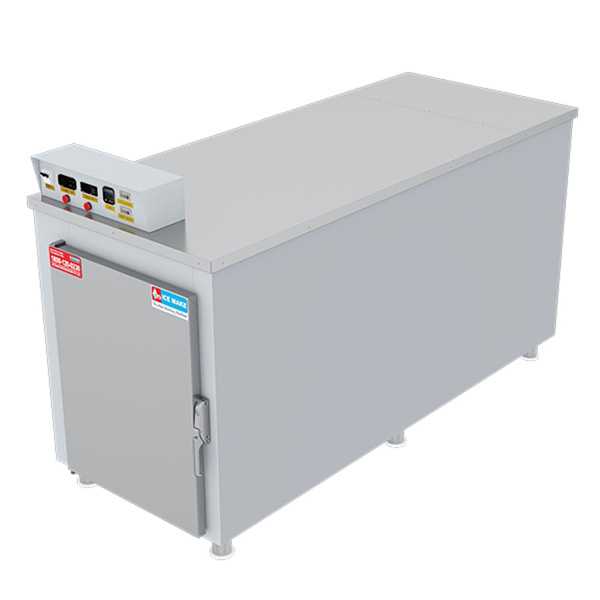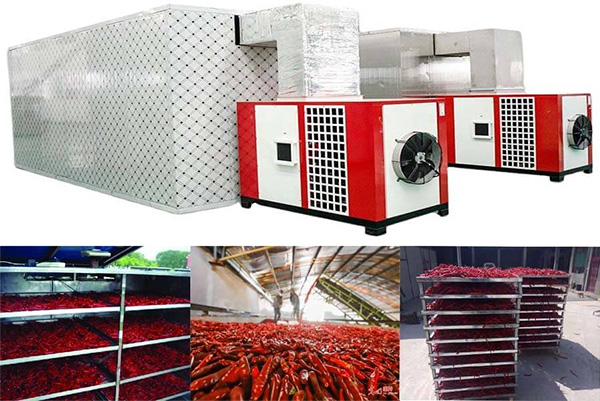
Content Menu
● Introduction
● Understanding Heat Pump Dryers
>> What is a Heat Pump Dryer?
>> How Does a Heat Pump Dryer Work?
● Advantages of Heat Pump Dryers in Food Processing
>> Energy Efficiency
>> Temperature Control
>> Moisture Removal Efficiency
>> Environmental Benefits
● Applications of Heat Pump Dryers in the Food Industry
>> Fruit and Vegetable Drying
>> Herb and Spice Drying
>> Meat and Fish Processing
● Innovations in Heat Pump Dryer Technology
>> Multi-stage Heat Pump Dryers
>> Hybrid Heat Pump Dryers
>> Smart Control Systems
● Choosing the Right Heat Pump Dryer for Your Food Processing Needs
● The Future of Heat Pump Dryers in Food Processing
● Conclusion
● Frequently Asked Questions
>> 1. What are the main advantages of using a heat pump dryer for food processing?
>> 2. Can heat pump dryers be used for all types of food products?
>> 3. How do heat pump dryers compare to traditional drying methods in terms of energy consumption?
>> 4. What factors should I consider when choosing a heat pump dryer for my food processing business?
>> 5. Are there any limitations or drawbacks to using heat pump dryers for food processing?
Introduction
In recent years, the food processing industry has witnessed a significant transformation with the introduction of heat pump dryers. These innovative devices have revolutionized the way we dry and preserve food products, offering numerous advantages over traditional drying methods. This article will explore the world of heat pump dryers for food, their benefits, applications, and impact on the industry.
Understanding Heat Pump Dryers
What is a Heat Pump Dryer?
A heat pump dryer is an advanced drying system that utilizes heat pump technology to remove moisture from food products. Unlike conventional dryers that rely on direct heat sources, heat pump dryers work by circulating air through a closed-loop system, efficiently extracting moisture while maintaining lower temperatures.
How Does a Heat Pump Dryer Work?
The working principle of a heat pump dryer involves several key components:
1. Evaporator: Removes moisture from the air
2. Compressor: Increases the temperature and pressure of the refrigerant
3. Condenser: Transfers heat to the drying air
4. Expansion valve: Reduces pressure and temperature of the refrigerant
This closed-loop system allows for precise control of temperature and humidity, making it ideal for drying sensitive food products.

Advantages of Heat Pump Dryers in Food Processing
Energy Efficiency
One of the most significant advantages of heat pump dryers is their energy efficiency. By recirculating and reusing heat, these systems consume significantly less energy compared to traditional drying methods. This not only reduces operational costs but also contributes to a more sustainable food processing industry.
Temperature Control
Heat pump dryers offer precise temperature control, allowing for the gentle drying of heat-sensitive food products. This is particularly important for preserving the nutritional value, color, and flavor of fruits, vegetables, and herbs.
Moisture Removal Efficiency
The closed-loop system of heat pump dryers enables efficient moisture removal, even in high-humidity environments. This results in faster drying times and improved product quality.
Environmental Benefits
By reducing energy consumption and eliminating the need for fossil fuels, heat pump dryers contribute to a lower carbon footprint in the food processing industry.
Applications of Heat Pump Dryers in the Food Industry
Fruit and Vegetable Drying
Heat pump dryers are extensively used for drying a wide variety of fruits and vegetables, including:
- Apples
- Mangoes
- Berries
- Tomatoes
- Carrots
- Peppers
The gentle drying process helps retain the natural color, flavor, and nutritional content of these products.
Herb and Spice Drying
Herbs and spices are particularly sensitive to high temperatures. Heat pump dryers provide an ideal solution for preserving the essential oils and aromatic compounds in:
- Basil
- Oregano
- Thyme
- Rosemary
- Cinnamon
- Turmeric
Meat and Fish Processing
Heat pump dryers are also used in the production of dried meat and fish products, such as:
- Beef jerky
- Dried fish
- Cured meats
The controlled drying environment ensures food safety while maintaining product quality.

Innovations in Heat Pump Dryer Technology
Multi-stage Heat Pump Dryers
Advanced multi-stage heat pump dryers have been developed to further improve energy efficiency and drying performance. These systems use multiple evaporators and condensers to optimize the drying process for different food products.
Hybrid Heat Pump Dryers
Hybrid systems combine heat pump technology with other drying methods, such as solar drying or infrared heating. This approach maximizes energy efficiency and allows for greater flexibility in processing various food products.
Smart Control Systems
Modern heat pump dryers are equipped with intelligent control systems that monitor and adjust drying parameters in real-time. This ensures optimal drying conditions throughout the process, resulting in consistent product quality.
Choosing the Right Heat Pump Dryer for Your Food Processing Needs
When selecting a heat pump dryer for food processing, consider the following factors:
1. Capacity: Determine the volume of food products you need to process
2. Product type: Different foods may require specific drying conditions
3. Energy efficiency: Look for models with high Coefficient of Performance (COP) ratings
4. Temperature range: Ensure the dryer can maintain the required temperatures for your products
5. Humidity control: Choose a system with precise humidity regulation capabilities
6. Ease of maintenance: Opt for dryers with accessible components for easy cleaning and servicing
The Future of Heat Pump Dryers in Food Processing
As the demand for high-quality dried food products continues to grow, heat pump dryers are expected to play an increasingly important role in the food processing industry. Ongoing research and development efforts are focused on:
1. Improving energy efficiency
2. Enhancing drying uniformity
3. Developing new applications for heat-sensitive products
4. Integrating renewable energy sources
5. Optimizing control systems for even greater precision
These advancements will further solidify the position of heat pump dryers as a cornerstone technology in modern food processing.
Conclusion
Heat pump dryers have revolutionized the food processing industry by offering an energy-efficient, precise, and gentle drying solution for a wide range of products. As technology continues to evolve, we can expect even greater innovations in heat pump dryer design and functionality, leading to improved food quality, reduced energy consumption, and a more sustainable food processing industry.

Frequently Asked Questions
1. What are the main advantages of using a heat pump dryer for food processing?
Answer: The main advantages of using a heat pump dryer for food processing include energy efficiency, precise temperature and humidity control, gentle drying of heat-sensitive products, faster drying times, and environmental benefits due to lower energy consumption and reduced carbon footprint.
2. Can heat pump dryers be used for all types of food products?
Answer: While heat pump dryers are versatile and can be used for a wide range of food products, they are particularly well-suited for heat-sensitive items such as fruits, vegetables, herbs, spices, and certain meat products. However, some products with very high moisture content or those requiring extremely high temperatures may require specialized drying methods.
3. How do heat pump dryers compare to traditional drying methods in terms of energy consumption?
Answer: Heat pump dryers are significantly more energy-efficient compared to traditional drying methods. They can typically reduce energy consumption by 60-80% due to their closed-loop system and ability to recirculate and reuse heat. This results in lower operational costs and a reduced environmental impact.
4. What factors should I consider when choosing a heat pump dryer for my food processing business?
Answer: When choosing a heat pump dryer, consider factors such as drying capacity, the types of food products you'll be processing, energy efficiency ratings, temperature and humidity control capabilities, ease of maintenance, and initial investment costs. It's also important to evaluate the long-term energy savings and potential improvements in product quality.
5. Are there any limitations or drawbacks to using heat pump dryers for food processing?
Answer: While heat pump dryers offer many advantages, there are some limitations to consider. These may include higher initial investment costs compared to traditional dryers, potential limitations in very high-temperature applications, and the need for regular maintenance to ensure optimal performance. Additionally, very large-scale operations may require multiple units or hybrid systems to meet high-volume production needs.












